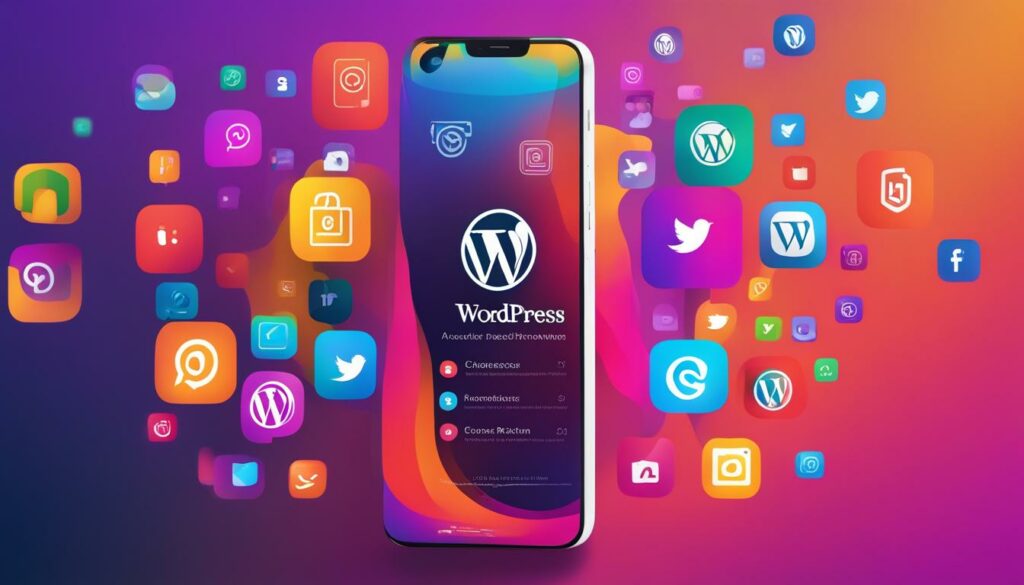When it comes to hosting for animation studios, finding the right provider is crucial for a seamless production process. Your hosting needs should align with the unique requirements of animation studios, which often involve large file sizes and complex rendering processes. In this article, we will explore key insights and best practices to ensure that you choose the best hosting solution for your animation studio.
Key Takeaways:
- Choosing the right hosting provider is crucial for animation studios to manage large file sizes and complex rendering processes.
- Consider the specific hosting requirements of your animation studio, such as scalability, storage capacity, and network speed.
- Ensure that your hosting solution offers reliable backups and data security measures to protect your valuable animation projects.
- Look for hosting providers that offer efficient content delivery networks (CDNs) to ensure smooth streaming and distribution of your animated content.
- Regularly assess and optimize your hosting setup to meet the evolving needs of your animation studio and maintain a high level of performance.
Benefits of Hiring Multiple Studios
Hiring multiple animation studios can offer a range of benefits that contribute to the success of a production. By leveraging the strengths of each studio, you can maximize creativity, access a broader pool of talent, manage workloads efficiently, and achieve cost savings.
Increased Creativity and Diversity
When you hire multiple studios, you bring together different artistic styles and perspectives, leading to increased creativity and diversity in your project. Each studio contributes its unique vision and expertise, resulting in a more dynamic and captivating end product.
Access to a Broader Pool of Talent
Working with multiple studios allows you to tap into a vast network of talented artists, animators, and technicians. This access to diverse skill sets and expertise ensures that you have the right talent for each aspect of your production, ultimately enhancing the quality and overall success of your project.
Efficient Workload Division
Dividing the workload among multiple studios allows you to streamline the production process and meet tight deadlines more efficiently. Each studio can focus on specific tasks or sequences, resulting in faster turnaround times and smoother workflow management. This efficient division of work ensures that your project stays on track and meets the demands of your production schedule.
Cost Savings
Competition among multiple studios can lead to cost savings for your production. Studios may offer competitive pricing to secure projects, allowing you to negotiate favorable rates and potentially reduce your overall budget. These cost savings enable you to allocate resources to other essential aspects of your production, ensuring a high-quality end result.
By hiring multiple studios, you harness the power of collaboration and harness the strength of each studio’s unique offerings. This approach enhances creativity, secures access to diverse talent, optimizes workflow, and delivers cost-effective solutions for your animation production.
Now that you understand the benefits of hiring multiple studios, let’s explore the challenges that you may encounter in managing a multi-studio production.
Production Challenges
While hiring multiple studios has its benefits, it also presents several production challenges. Coordinating the efforts of multiple studios requires effective project management and strong communication skills to ensure that tasks are completed on schedule. Maintaining consistent communication and ensuring stylistic and quality consistency can be particularly challenging when working with studios located in different countries or time zones.
One of the key challenges is quality control. Establishing clear quality standards across all studios is crucial to deliver a cohesive and polished final product. This can be especially demanding when studios have varying workflows and processes.
Working with multiple studios also brings forth legal and financial issues that need to be managed properly. These may include negotiating contracts and agreements, addressing copyright and intellectual property concerns, and allocating financial resources efficiently.
Overall, coordinating multiple studios requires meticulous attention to detail, effective communication, and a robust quality control system to ensure a seamless production process.

Coordinating Multiple Studios
Coordinating the efforts of multiple studios requires careful planning and coordination to ensure a cohesive and successful production. Here are some key considerations:
- Effective Project Management: Assign a project manager or coordinator to oversee the production and serve as the primary point of contact for all studios.
- Clear Communication Channels: Establish regular communication channels to ensure consistent updates and feedback between studios.
- Workflow Adaptation: Understand and adapt to the workflow of each studio, taking into account their strengths and limitations.
Ensuring Consistency and Quality Control
Maintaining consistency and quality across multiple studios is essential for a cohesive final product. Consider the following:
- Style Guides and References: Provide clear style guides and visual references to ensure that all studios adhere to the same aesthetic and artistic direction.
- Regular Reviews and Feedback: Establish a review process to provide feedback and ensure that all studios are meeting the required quality standards.
- Quality Assurance: Implement a robust quality assurance process to identify and address any inconsistencies or issues in the production.
Managing Legal and Financial Issues
Working with multiple studios can introduce legal and financial complexities. Consider the following factors:
- Contract Negotiations: Carefully negotiate and draft contracts with each studio, outlining the scope of work, deliverables, timelines, and financial arrangements.
- Copyright and Intellectual Property: Address any copyright and intellectual property concerns to ensure that all parties are properly credited and protected.
- Financial Planning and Oversight: Allocate and manage financial resources effectively to account for the costs associated with collaborating with multiple studios.
By addressing these production challenges head-on and implementing effective strategies, you can successfully navigate the complexities of coordinating multiple studios to deliver a high-quality animation production.
Best Practices for Managing a Multi-Studio Production
To effectively manage a multi-studio production, you need to implement best practices that ensure smooth collaboration and optimize productivity. Follow these guidelines:
- Choose the Right Studios: Before partnering with animation studios, consider their reputation, capacity, equipment, and compatibility with your production. Aligning with studios that align with your goals and standards will ensure a successful partnership.
- Distribute Tasks Effectively: Clearly define the tasks and responsibilities for each studio to avoid confusion and delays. Validate the technical documents with stakeholders to ensure clarity in expectations and deliverables.
- Prioritize Communication: Communication is key when working with multiple studios. Take into account time zone differences and language barriers. Designate a dedicated contact person to facilitate seamless communication throughout the production.
- Regular Meetings and Detailed Briefings: Conduct regular meetings and provide detailed briefings for each stage and episode. This promotes effective coordination among studios and helps ensure everyone is aligned with the project’s vision and goals.
- Adapt to Each Studio’s Workflow: Understand and adapt to the workflow of each studio to maintain consistency and optimize collaboration. Having a supervisor who is familiar with each studio’s processes ensures quality and helps navigate any cultural nuances that may impact the production.
Implementing these best practices will empower you to manage a multi-studio production effectively, enabling seamless collaboration and achieving the desired outcome.

Tips for Creating an Animation Portfolio
Building an animation portfolio is essential for showcasing your skills to potential employers or clients. Whether you’re a seasoned animator or just starting in the industry, a well-crafted portfolio can make a lasting impression. Here are some tips to help you create an impressive animation portfolio:
- Create a Showreel: Your showreel is the highlight of your portfolio. It should be a concise compilation of your best work, grabbing attention within the first 30 seconds. Showcase a range of styles, techniques, and genres to demonstrate your versatility.
- Incorporate Specific Details: Include shot breakdowns, processes used, and the role you played in each project. This helps potential employers understand your contribution and expertise.
- Customize for Different Roles: Tailor your portfolio to match the art styles and genres of the studios or productions you’re applying to. For example, if you’re interested in character animation, include character-driven work in your portfolio.
- Diversify Your Portfolio: Depending on your desired role, include different types of animation work. For pre-production roles, showcase concept art, storyboards, or layouts. If you specialize in rigging, highlight your rigging skills. If you excel in stop-motion, include examples of model making or puppet animation.
- Keep it Up to Date: Regularly update your portfolio with your latest work. Remove older pieces that no longer represent your current skill level or style.
- Showcase Additional Artwork: Include examples of your additional artwork and personal projects to highlight your creativity and passion for animation.

Remember, your animation portfolio is your chance to impress potential employers and show off your skills. Take the time to curate a visually engaging and comprehensive collection of your best work. By following these tips, you’ll be well on your way to creating an animation portfolio that stands out from the rest.
Developing the Right Mindset for Starting an Animation Studio
Having the right mindset is crucial for aspiring animation studio owners. It requires a growth mindset that embraces perseverance, effort, and continuous learning. By adopting this mindset, you can navigate the challenges and setbacks that come with starting an animation studio and stay focused on your long-term goals.
1. Change Negative Self-Talk: It’s important to challenge and replace negative thoughts that may hinder your progress. Cultivate a positive inner dialogue and believe in your abilities to overcome obstacles.
2. Surround Yourself with the Right People: Connect with individuals who share your passion for animation and entrepreneurship. Collaborating with like-minded individuals can provide you with support, inspiration, and valuable insights.
3. Practice Gratitude: Gratitude can help you maintain a positive mindset and appreciate the progress you make along the way. Take time to reflect on your achievements, even the small ones, and express gratitude for the opportunities that come your way.
4. Experience New Things: Explore different animation styles, techniques, and mediums. Embrace experimentation and embrace the opportunity to learn from new experiences. This openness can fuel creativity and broaden your skill set.
5. Adopt a Healthy Lifestyle: Starting an animation studio requires dedication, and taking care of your physical and mental well-being is essential. Make time for exercise, nourishing meals, quality sleep, and self-care activities to maintain balance and sustain your energy.
“The best way to predict the future is to create it.” – Peter Drucker
A growth mindset sets the foundation for success as you embark on your journey to start an animation studio. It empowers you to embrace challenges, persist in the face of setbacks, and continuously improve your skills. Remember, starting a business is a learning process, and each step forward is an opportunity for growth.
| Mindset Strategies | Benefits |
|---|---|
| Change Negative Self-Talk | Improves self-confidence and motivation |
| Surround Yourself with the Right People | Creates a supportive network and opportunities for collaboration |
| Practice Gratitude | Fosters a positive mindset and appreciation for progress |
| Experience New Things | Expands creativity and skill set |
| Adopt a Healthy Lifestyle | Ensures physical and mental well-being for sustained success |
Conclusion
Starting an animation studio requires careful planning and consideration. To set yourself up for success, it is important to establish SMART goals for your studio. These goals should be Specific, Measurable, Achievable, Relevant, and Time-bound, providing a clear roadmap for your studio’s growth and development.
Continuously improving your animation skills is essential in an industry that is constantly evolving. Stay up-to-date with the latest animation trends and techniques, and invest time in mastering them. This will allow you to create high-quality work that stands out in the competitive animation market.
Running an animation studio also involves developing essential business skills. Understanding finance, marketing, and project management will help you navigate the challenges and ensure the long-term success of your studio. Consider taking courses or seeking mentorship to develop these skills further.
When starting an animation studio, it is crucial to establish a separate bank account. This will help you track your studio’s finances accurately, make tax reporting easier, and demonstrate professionalism to clients and collaborators. Additionally, registering your animation studio as a legal entity, such as an LLC or corporation, protects your personal assets and ensures compliance with any applicable laws and regulations.
By following these best practices and continuously learning and adapting, you can build a successful animation studio and thrive in the industry. Remember, starting a studio is a journey, and success will come with perseverance and a passion for creating captivating animations.
FAQ
Q: What are the benefits of hiring multiple studios for animation productions?
A: Hiring multiple studios allows for increased creativity and diversity, access to a broader pool of talent, workload division for faster completion, and potential cost savings through competition.
Q: What are the production challenges when working with multiple animation studios?
A: Coordinating multiple studios requires effective project management and communication. Maintaining consistency in style and quality, ensuring quality control, and managing legal and financial issues can be challenging.
Q: What are the best practices for managing a multi-studio production?
A: Best practices include choosing the right studios based on reputation and compatibility, distributing tasks effectively, prioritizing communication, and adapting to the workflow of each studio.
Q: What should be included in an animation portfolio?
A: An animation portfolio should include a showreel that highlights your best work, specific details about each project, and examples of different types of work, such as pre-production art, storyboards, rigging, or animation.
Q: What is the mindset required for starting an animation studio?
A: Developing a growth mindset is crucial, embracing perseverance, continuous learning, surrounding yourself with the right people, and adopting a healthy lifestyle.
Q: What are the essential steps for starting an animation studio?
A: Essential steps include setting SMART goals, improving animation skills, developing business skills, establishing a separate bank account, registering the studio as a legal entity, and addressing legal and financial considerations.












